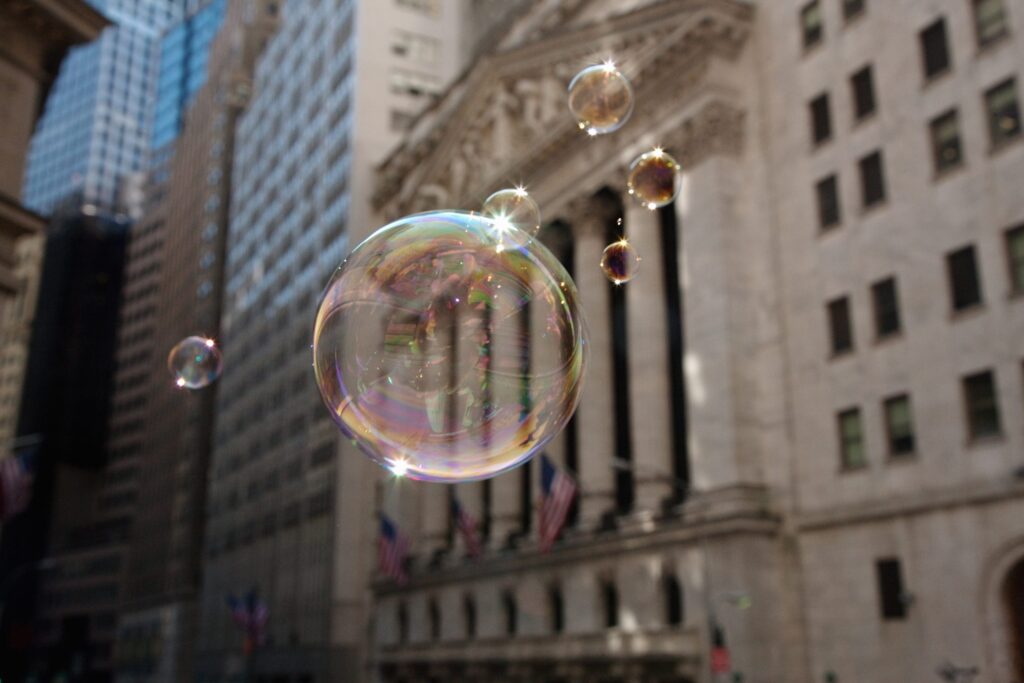Investors, buckle up: the US stock market, the crown jewel of global finance, may be heading toward uncharted—and potentially disastrous—territory. That’s the warning from financial heavyweights as they sound alarms about the “mother of all bubbles.” Let’s break it down.
America’s Market Supremacy: Brilliant or Dangerous?
Rockefeller International’s Ruchir Sharma didn’t mince words, describing the U.S. stock market as a towering bubble sucking capital from the rest of the world. Sharma argues that America’s financial dominance—fueling one of the most attractive markets globally—has outgrown what’s economically sound.
Now, here’s the kicker: he doesn’t see this as healthy leadership. It’s more like an addiction. Capital is flowing in so heavily that it’s practically starving other markets of opportunity, raising questions about what happens when the good times inevitably stop rolling.
Does the emperor really have no clothes? Sharma seems to think it’s at least possible.

A Debt Avalanche Waiting to Crash
This isn’t just about overconfident investors or the allure of Silicon Valley. There’s also America’s downright problematic addiction to debt. High borrowing levels might look great now—propping up corporate profits and growth—but experts agree: when interest rates bite, and borrowing isn’t as easy, things could get ugly fast.
Here’s the grim truth: The very practices that prop up the markets today might be sowing the seeds for an epic undoing tomorrow. Sharma isn’t the only one keeping a wary eye on the credit trends. This could easily turn into a “borrow now, regret later” saga.
Shades of the Dot-Com Disaster?
Cue the historical déjà vu. Oaktree Capital’s co-founder, Howard Marks, thinks today’s market fever—with tech stocks leading the charge and AI as the latest craze—has some very uncomfortable parallels to the dot-com bust of the late 1990s.
Unlike the fly-by-night companies of that era, today’s “Magnificent Seven” tech giants (like Apple, Google, and Amazon) have real balance sheets. Still, even solid fundamentals won’t save you from speculative overexcitement. Marks warns that, once again, we may be in an era where markets overestimate their future potential, setting themselves up for painful corrections.
The Fed’s Blunt Warning: Does Anyone Care?
Even the Federal Reserve isn’t staying quiet. Lisa Cook, one of its governors, compared today’s frothy valuations to the “irrational exuberance” of 1996, a phrase now etched into financial lore thanks to Alan Greenspan. But here’s where it gets almost funny: markets don’t seem to care.
Investors are still chasing tech rallies and innovations with an almost reckless enthusiasm. It’s a frenzy, bordering on willful ignorance—and a recipe, some say, for a market smackdown.
The Big Question: What Should Investors Do Now?
So, what’s an investor to do? Ignore the skepticism and hope for more big gains? Or buckle down and prepare for the fallout? Analysts are divided, but most agree: this isn’t the time to take wild bets. Diversification, skepticism, and caution could end up being your best friends.
At the end of the day, nobody can say for sure when, or even if, this bubble will burst. Maybe Sharma’s warnings are premature. Maybe Marks is just a touch nostalgic about the last big blow-up. Or maybe—not to alarm anyone here—they’re both right, and we’re all sitting on a ticking time bomb.
The U.S. market’s dazzling ascent might be a show for the ages. But as history reminds us, what goes up often comes down—sometimes harder than anyone expects. Stay vigilant, ask hard questions, and, as always, don’t believe every shiny headline.
I’m Going to Buy SpaceX Stock, And Here’s How I’m Going to Do It




